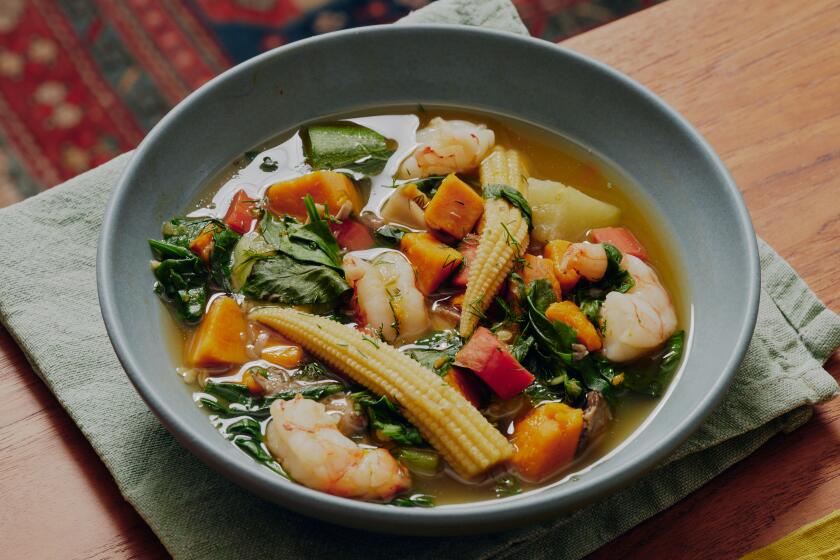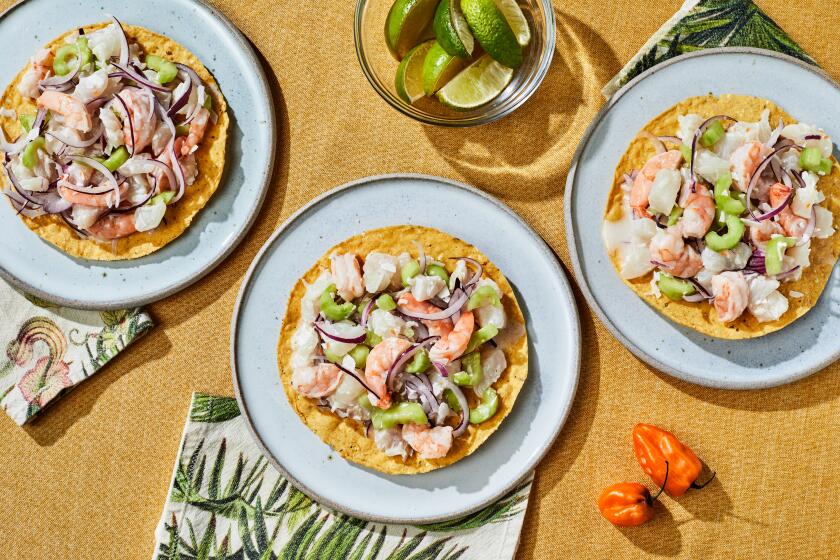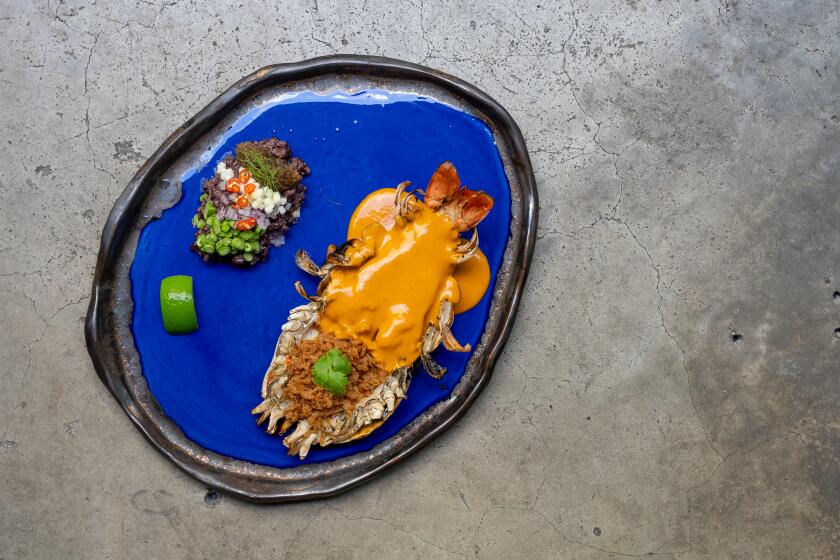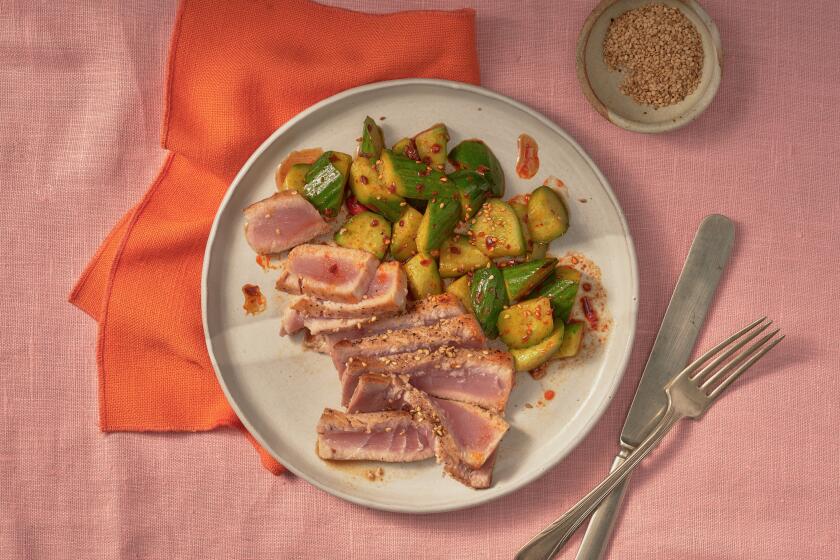Salmon Croquettes

Moving to Paris was the fulfillment of a longtime dream. I immediately set out to explore the bakeries, sidewalk cafes, bistros, brasseries and restaurants that seemed to be on every street corner.
I learned to recognize a properly made tarte tatin (when they’re microwaved, the outside will burn your tongue even though the inside is stone cold). I sampled crepes at every opportunity (eventually deciding that simple crepes with butter and sugar were best). I ate my way through the breakfast breads of the neighborhood bakeries, determined to find the flakiest, most buttery croissant and the finest pain aux raisins .
And then the honeymoon was abruptly over. The weather turned gray and dismal, as did the Parisians who were returning from their summer vacations. Transit and postal strikes made daily life a struggle. One morning I woke up and realized that I did not want to eat croissants or raisin bread or even tartine for breakfast. What I wanted was grits.
In that moment my mind was flooded with memories of food from home. All the good things from the breakfast table--pancakes and cane syrup, fresh biscuits with strawberries, pan sausage and crispy bacon. Then came a jumble of mixed recollections--Texas barbecue and chili, fried chicken, collard and mustard greens, cornbread, candied yams, smothered pork chops ....I smiled remembering the contentment that comes with a bellyful of such good food. And then I cried, because I didn’t have any idea when I was going to have it again.
I immediately thought, “Call home and ask Ma ... “, but I knew that even a care package from home wouldn’t satisfy my urges quickly enough. So I decided that I would find ingredients for some kind of soul food somewhere in Paris, or die trying.
The first thing I did was to peruse an Anglophone publication called France-U.S.A. Contacts, or FUSAC, for short. In it there are ads for businesses that could be attractive to English speakers, whether they be American, British, Australian or whatever. And lo and behold, I found ads for American grocers! Several of them! I had hit the jackpot--or had I? I immediately realized that these could be ersatz businesses, run by French people who had only a passing acquaintance with American food. But the only way to know was to visit them, so off I went.
*
I chose the store that was closest to my home, which was encouragingly named Thanksgiving, and set out. I tried to temper my excitement with a healthy dose of skepticism so that I wouldn’t be too disappointed if the only thing that I found there were hamburger buns and tortilla chips, things that the French consider “typically American.” To my delight, I found a boutique that was well supplied with a wide variety of packaged and processed foods that I never imagined I’d see in France--things such as Cheerios, pickle relish, Oreo cookies and Campbell’s soups. I impatiently searched the shelves and took mental notes.
And then I saw them-- grits! There was also cornmeal for my cornbread, baking powder and cream of tartar for my homemade biscuits, and pecans and Karo syrup for pecan pie! There was Louisiana hot sauce and gumbo file. I felt myself relax and realized that there was a huge grin on my face. My lifeline had been restored.
But looking around, I realized that there was no produce in the store. No sooner had I met my first challenge than a second one loomed before me. Where to find yams? Okra? Greens? I had been shopping in the open-air markets in my neighborhood for some time, and never recalled having seen any of these things. I made a concerted effort on my next trip, stopping at every stand to survey the merchandise.
Nothing. I visited different markets on different days so that I would be doubly sure that I wasn’t missing anything. No luck.
*
It was around this time that I had the good fortune to meet Pamela Grant-Fronval, an African American woman from Sacramento who lived in Paris with her French husband and small son. Pamela was very homesick and so yearned to meet other black women from America that she had taken to approaching people on the street to ask if they were from the U.S. She had the idea of getting these women together once a month to meet informally to discuss life in Paris from our shared perspective.
These meetings were the beginning of a nonprofit organization called SISTERS-an association of African American women in France. Our discussions were lively and entertaining, and I met people from many walks of life there. Among them were a couple of longtime Paris residents who helped me find the produce that I was missing, and meat and poultry items that were not readily available in French markets at the time--things like chicken wings and pork ribs, essential items for soul food devotees.
Melinda, originally from Atlanta, told me of a huge Asian supermarket on the south side of town. It was there that I found many different varieties of greens (though not the collards and mustards that I favored), hot peppers, okra, sweet potatoes and curious brown tubers that were labeled yams. I was surprised to find black-eyed peas, cornmeal and baking powder on the shelves there. The butcher shop sold beautiful chicken wings and lean slabs of pork ribs. And in the frozen food section, I found catfish! This was about as close to one-stop shopping as I was ever going to get.
*
Carolyn, originally from Oakland, lived on the north side of Paris. She told me about a market street and various shops in the adjacent neighborhood that catered to the local West African population. There I found black-eyed peas, greens (different than those found in the Asian market), okra and sweet potatoes in abundance and more yams. The ultimate treasure was a fishmonger specializing in fish imported directly from Africa, where I found live catfish.
Not only were these shopping experiences delicious, they inspired me to educate myself as well. Thus I read about the difference between yams and sweet potatoes, and learned that what I had grown up calling yams all my life were actually a variety of sweet potato. I learned that since collards are a member of the cabbage family, other greens that are members of the same family stand a good chance of resembling collards in flavor.
I also found a variety of cabbage with a pointed head and large, deep green outer leaves that made a very good substitute for collards.
Conversations at our meetings inevitably turned to reminiscences of food, and I was happy to be able to tell others of these discoveries. I also decided to begin working on a cookbook, concentrating on family recipes so that I could be assured that what I created in France was very close to, if not exactly like, what I used to eat at home. And so began the weekly questions that I’d pose to my mom, my cousin and others at home about how they prepared such-and-such a recipe, would they mind measuring the next time ....
The bond between myself and my Texas-Louisiana family was strengthened through our culinary history, and through my research, my connection with African American culinary history in general was enhanced. Doing research for the book, my mother successfully traced her father’s Creole family back to France.
And in a final irony, my collection of southern American family recipes was first published not in English, but French, as “La Cuisine Noire Americaine,” with an introduction by Alain Ducasse, one of the greatest chefs in France.
Drain the salmon, then flake it into a bowl. Add the egg; mix well. Set aside.
Melt the butter in a skillet over medium heat. Add the onion, bell pepper, garlic and celery and cook until soft, 6 to 8 minutes. Add the vegetables to the salmon and egg mixture. Season with salt and pepper and mix thoroughly. Refrigerate, covered, until the mixture is firm, at least 2 hours.
To make patties, shape about 1/2 cup of the mixture into ovals. Coat the patties thoroughly on both sides with the cornmeal.
Heat the oil in a frying pan over medium heat. Fry the cakes, a few at a time, until golden brown on one side, about 5 minutes. Carefully turn them and brown the other side, 4 to 5 minutes. Remove the patties from the pan and place on paper towels to drain.
Get our Cooking newsletter.
Your roundup of inspiring recipes and kitchen tricks.
You may occasionally receive promotional content from the Los Angeles Times.















